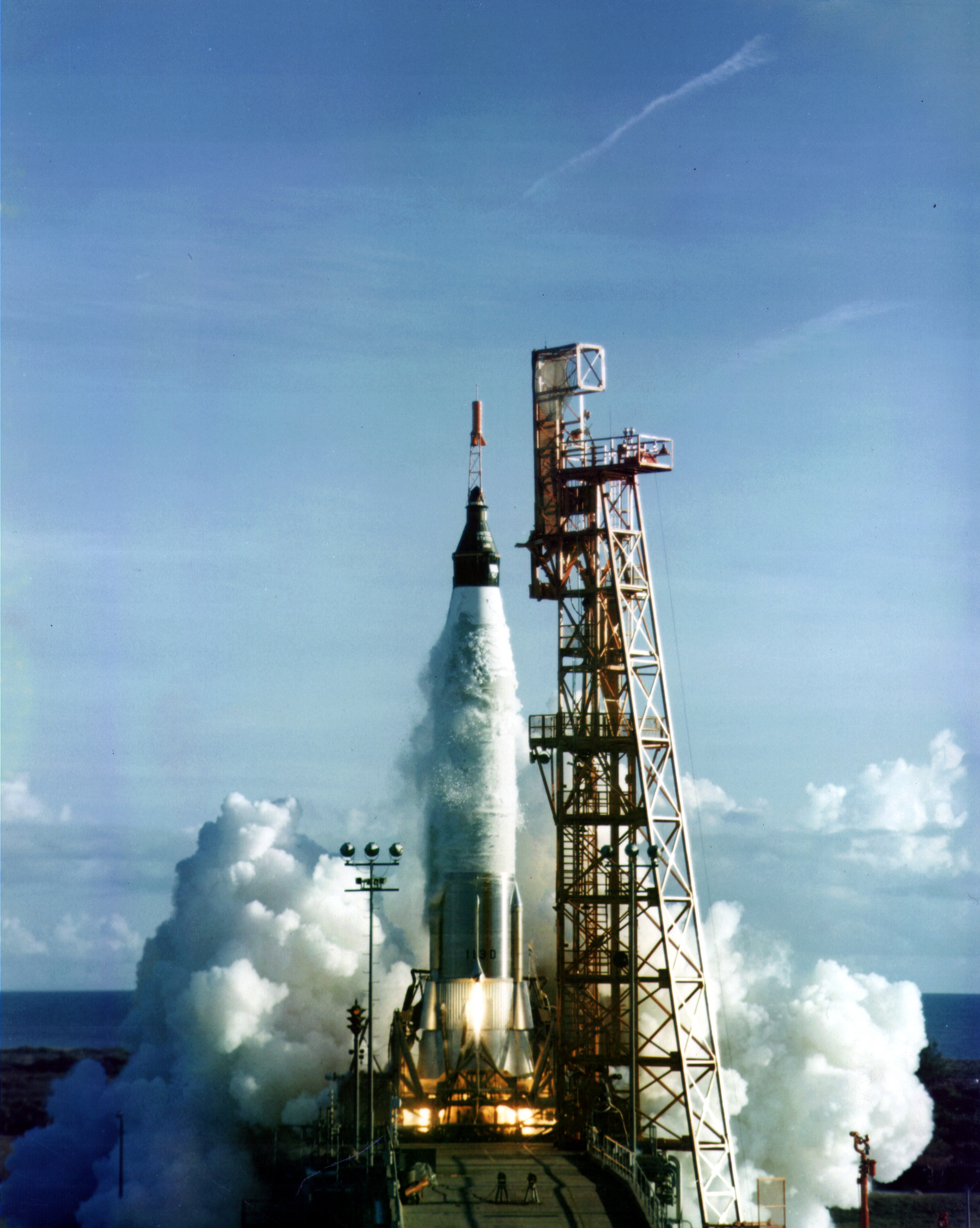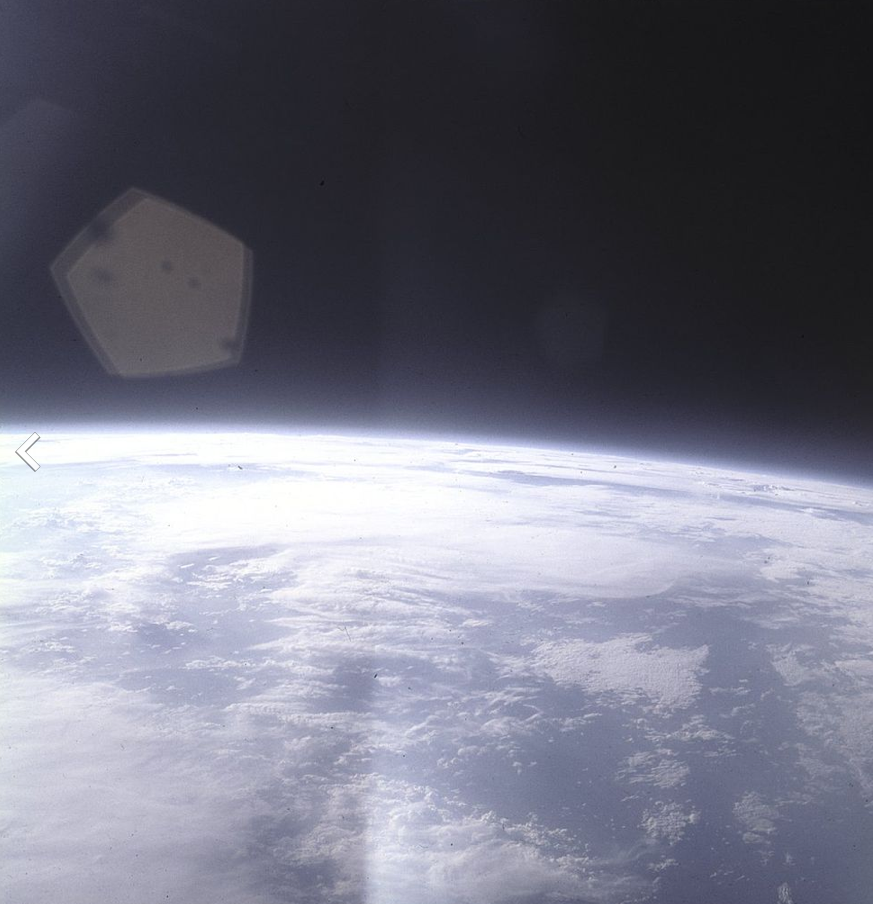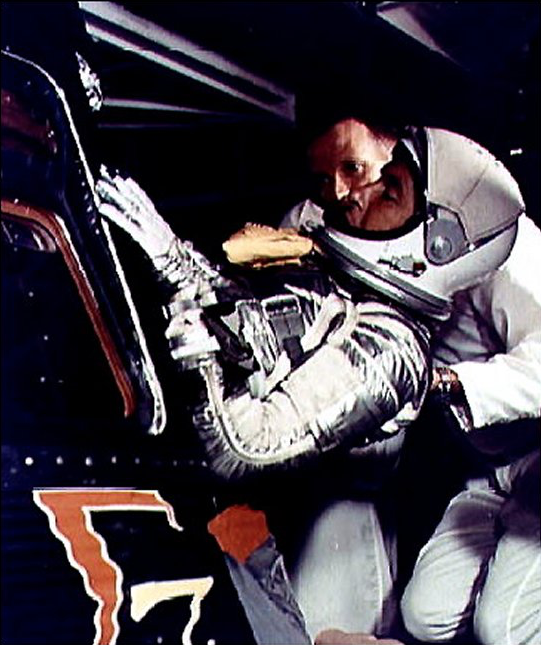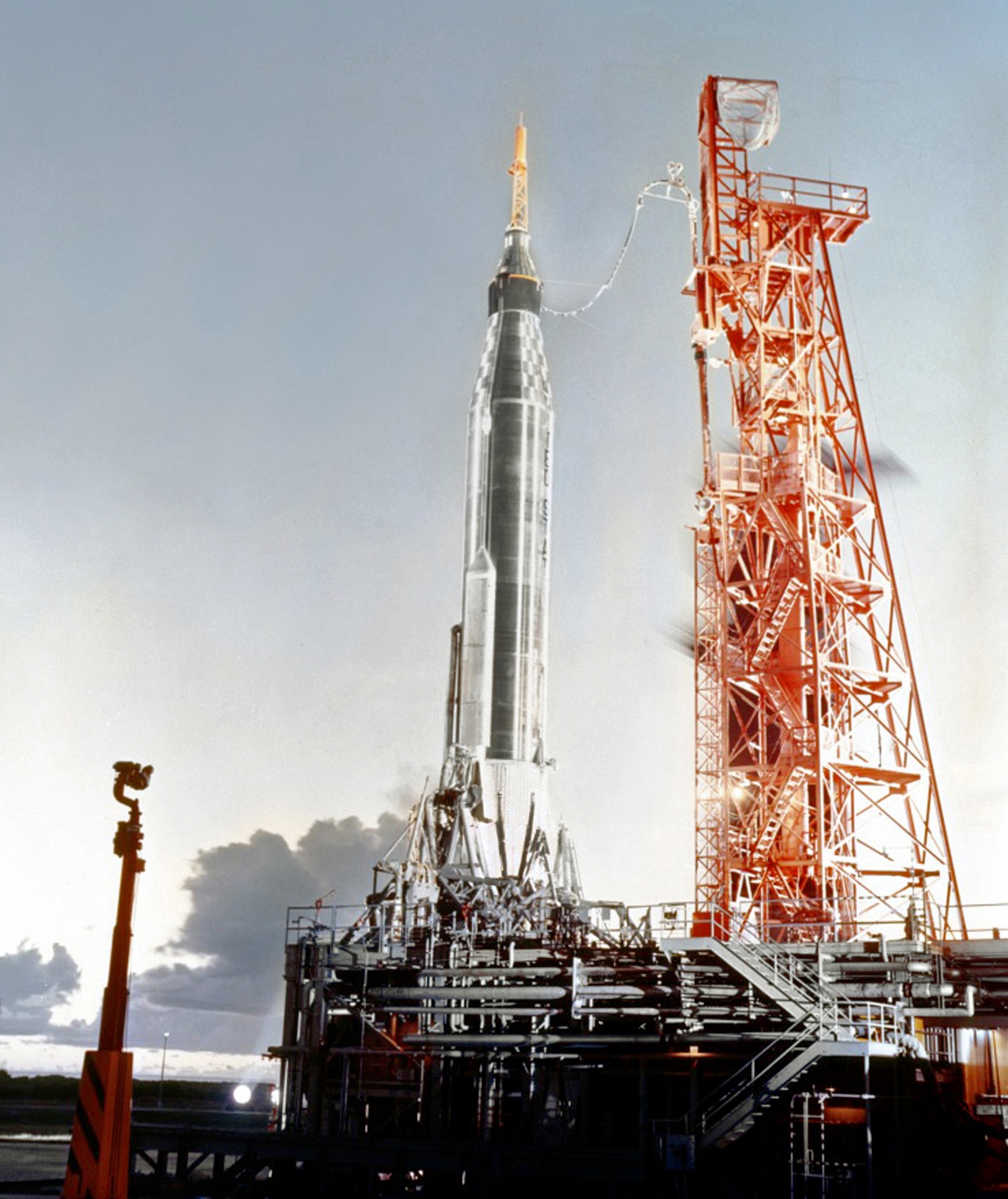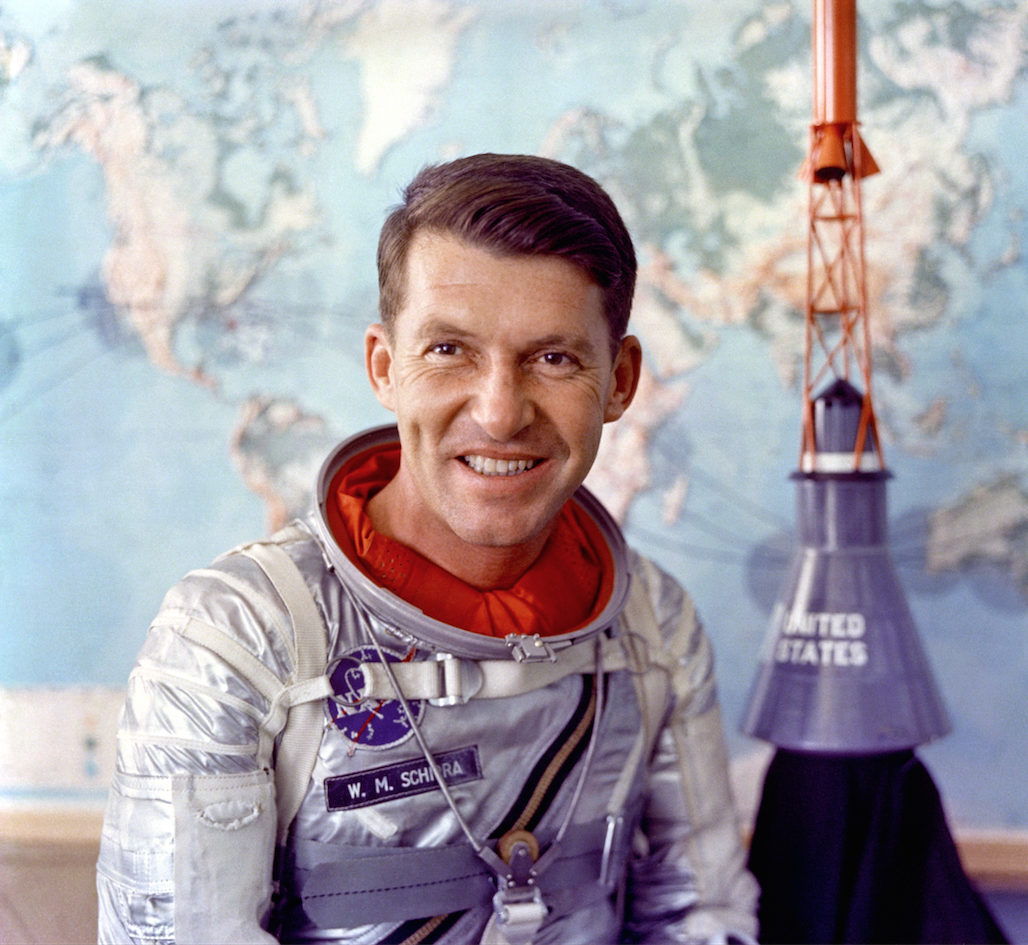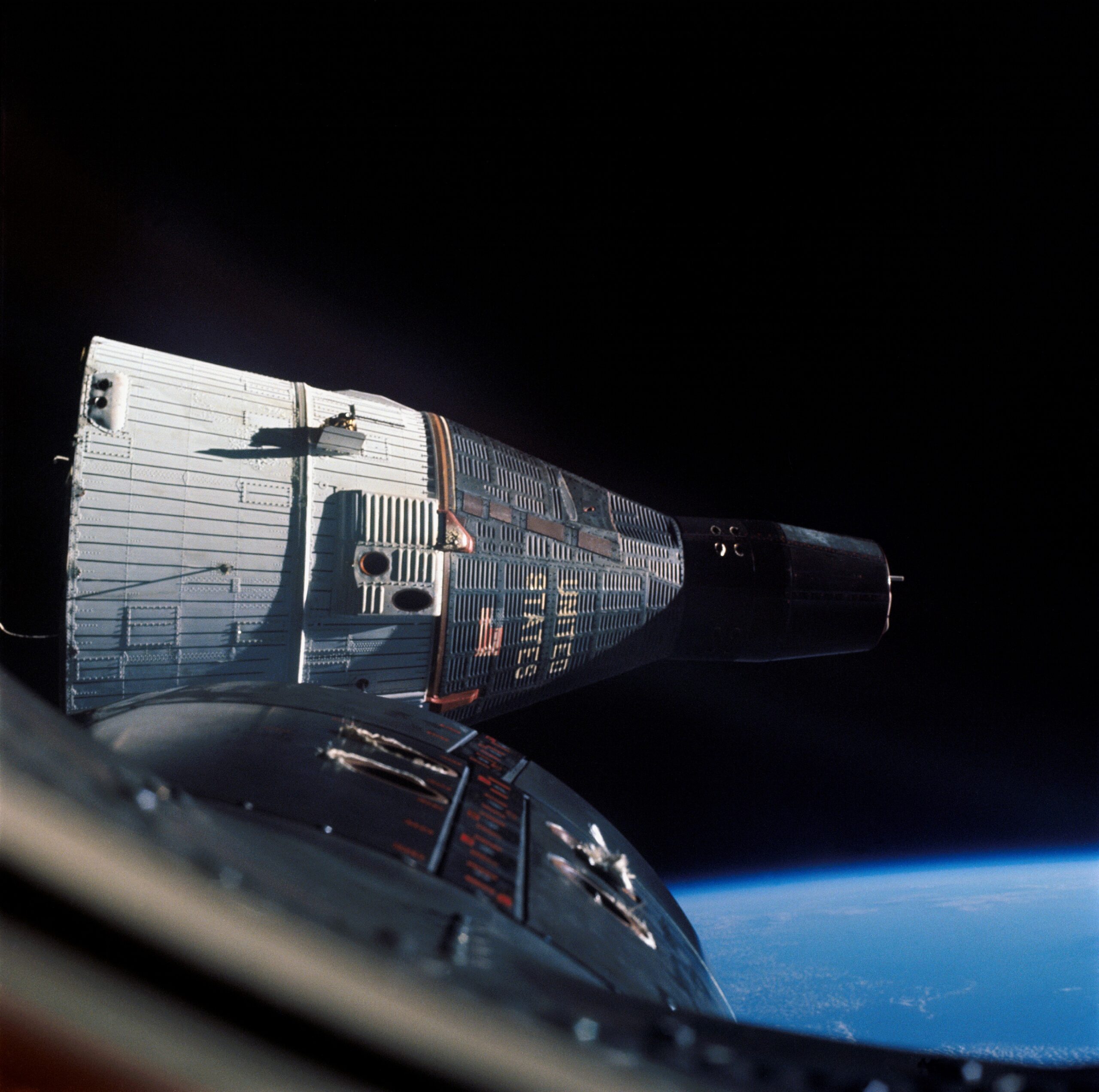
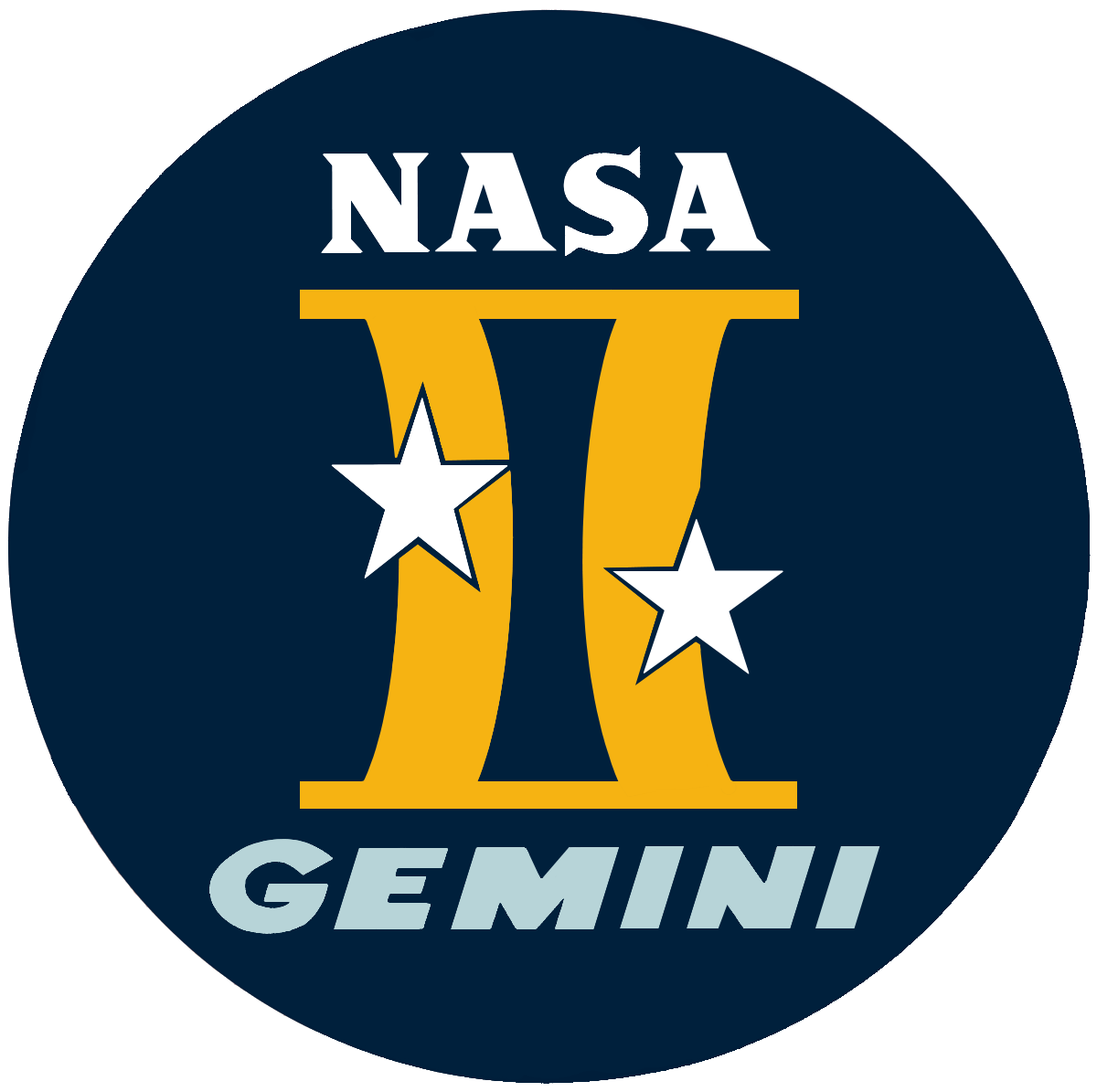
This was the first time that two manned space vehicles had rendezvoused in Earth orbit.
The two spacecraft remained together for 5 hours, 19 minutes before separating to a distance of approximately 10 miles (16 kilometers).
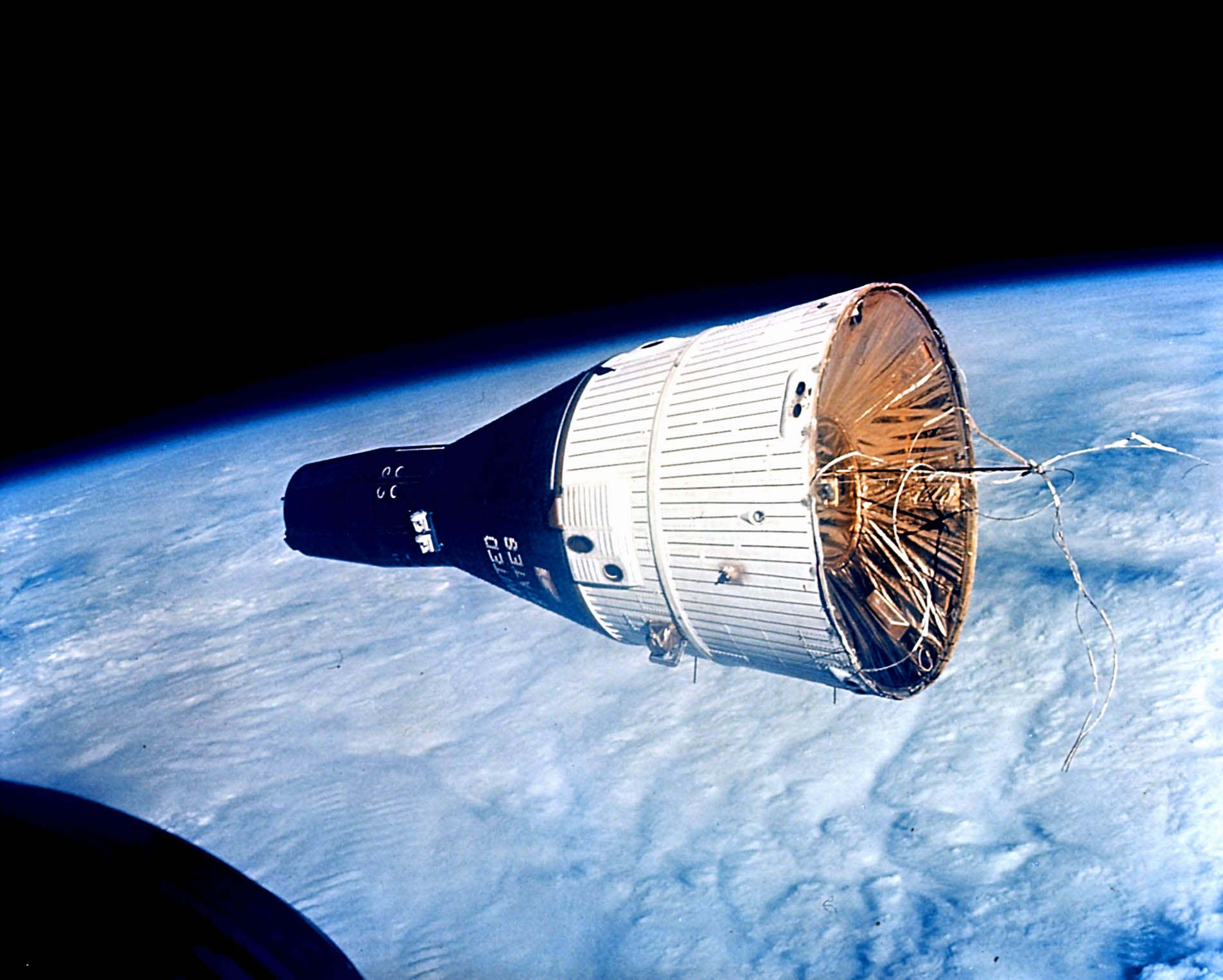
Gemini 7 had been in orbit since 4 December. Gemini 6, then 6A, had been postponed several times before finally launching on 15 December. It would return to Earth the following day, landing in the North Atlantic Ocean. Gemini 7 remained in orbit until 18 December.


The Titan II GLV was a two-stage, liquid-fueled rocket. The first stage was 70 feet, 2.31 inches (21.395 meters) long with a diameter of 10 feet (3.048 meters). It was powered by an Aerojet Engineering Corporation LR87-7 engine which combined two combustion chambers and exhaust nozzles with a single turbopump unit. The engine was fueled by Aerozine 50, a hypergolic 51/47/2 blend of hydrazine, unsymetrical-dimethyl hydrazine, and water. Ignition occurred spontaneously as the components were combined in the combustion chambers. The LR87-7 produced approximately 430,000 pounds of thrust (1,912.74 kilonewtons). It was not throttled and could not be shut down and restarted. Post flight analysis indicated that the first stage engine of GLV-7 had produced an average of 462,433 pounds of thrust (2,057.0 kilonewtons). The second stage was 25 feet, 6.375 inches (7.031 meters) long, with the same diameter, and used an Aerojet LR91 engine which produced approximately 100,000 pounds of thrust (444.82 kilonewtons), also burning Aerozine 50. GLV-7’s LR91 produced an average of 102,584 pounds of thrust (456.3 kilonewtons).
The Gemini/Titan II GLV-7 combination had a total height of 107 feet, 7.33 inches (32.795 meters) and weighed 346,228 pounds (157,046 kilograms) at ignition.
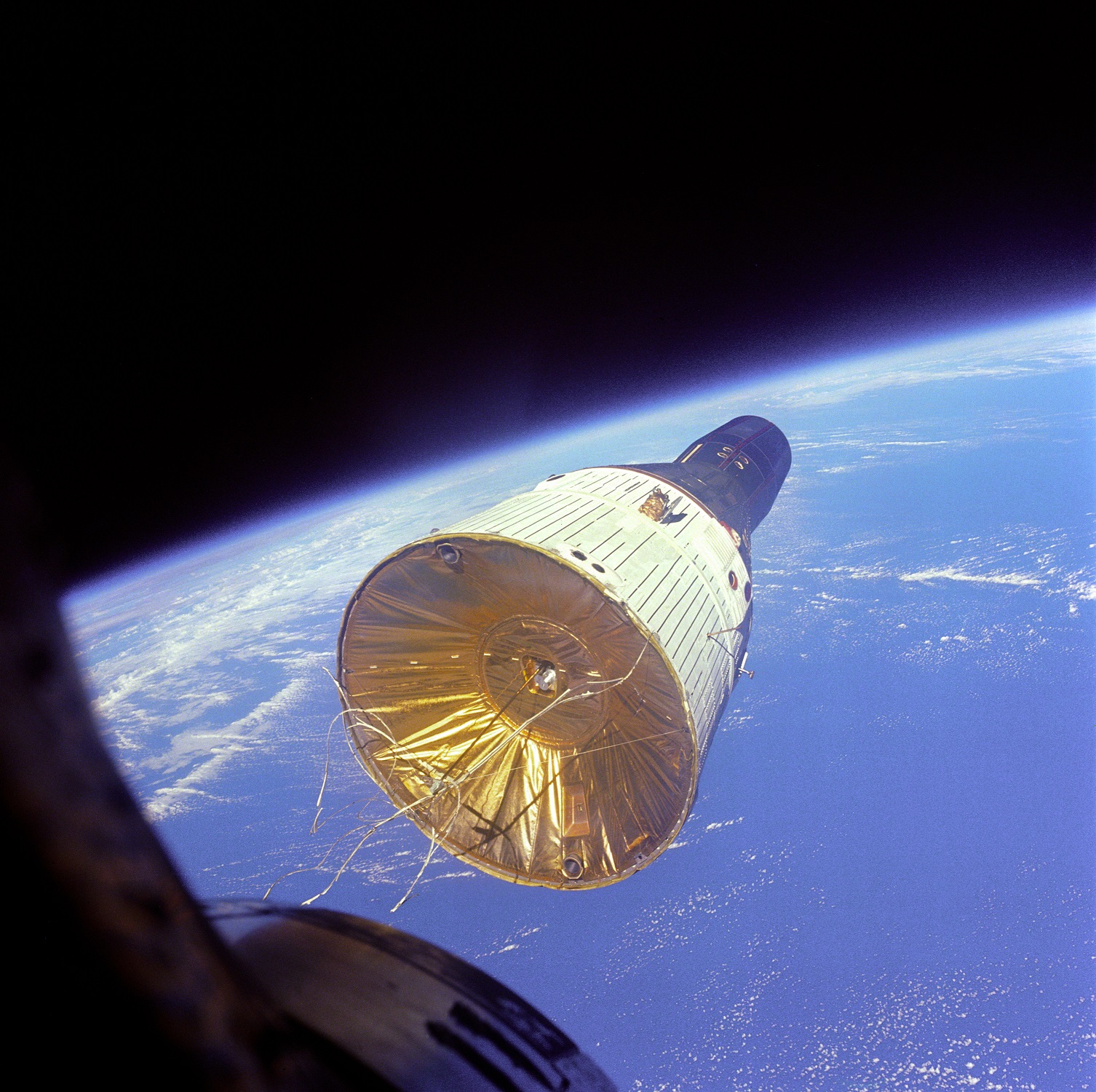
© 2018, Bryan R. Swopes
